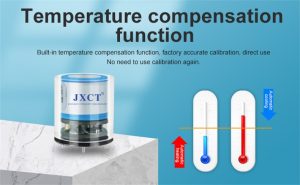Air pollution is a pressing global issue that poses significant risks to human health and the environment. To effectively tackle this problem, accurate and reliable air quality monitoring systems are essential. In recent years, the development of gas sensor technology has revolutionized air quality monitoring, enabling precise detection and analysis of various pollutants in real-time. This article explores how gas sensor technology is improving air quality monitoring, its applications in different sectors, and the potential benefits it offers.
Gas Sensor Technology and Its Working Principle:
Gas sensors are devices that detect and measure the concentration of specific gases present in the air. They operate based on various principles, such as electrochemical, metal oxide semiconductor (MOS), and photoionization. These sensors can detect pollutants like carbon monoxide (CO), nitrogen dioxide (NO2), ozone (O3), volatile organic compounds (VOCs), and particulate matter (PM). Gas sensors typically consist of a sensing element, integrated circuitry, and data processing capabilities.
Real-time Monitoring and Data Accuracy:
Gas sensor technology enables continuous, real-time monitoring of air quality, providing valuable data for timely interventions and decision-making. By strategically deploying gas sensors across different locations, comprehensive air quality profiles can be generated. This data allows authorities to identify pollution sources, understand pollutant dispersion patterns, assess the effectiveness of control measures, and develop targeted strategies to mitigate air pollution.
Applications in Environmental and Public Health:
Gas sensor technology finds extensive use in environmental and public health monitoring initiatives. In urban areas, gas sensors are installed at strategic points, such as traffic junctions, industrial zones, and near emission sources, to monitor and control pollution levels. Governments and regulatory bodies can utilize this data to enforce stricter emission standards and implement pollution control measures. Additionally, gas sensors integrated into wearable devices can provide individuals with real-time information about their immediate environment, empowering them to make informed decisions regarding their health.
Industrial and Workplace Environments:
Gas sensor technology plays a crucial role in ensuring workplace safety and preventing industrial accidents. In industries dealing with hazardous gases or volatile chemicals, gas sensors serve as early warning systems, alerting workers and triggering safety protocols when gas concentrations exceed permissible limits. By continuously monitoring the air quality in factories and other industrial settings, these sensors help enforce compliance with safety regulations, protect employee health, and prevent catastrophic incidents.
Indoor Air Quality Monitoring:
Indoor air pollution is a significant concern, as people spend a considerable amount of time in enclosed spaces. Gas sensor technology allows for accurate and continuous monitoring of indoor air quality, detecting pollutants such as carbon dioxide (CO2), formaldehyde, and volatile organic compounds (VOCs). This information is invaluable for promoting healthy indoor environments, especially in schools, offices, hospitals, and residential buildings.
Advancements and Future Outlook:
Gas sensor technology is witnessing continuous advancements, enabling better detection limits, improved selectivity, and enhanced stability. Integration with Internet of Things (IoT) platforms and data analytics tools facilitates comprehensive data analysis and visualization. Additionally, miniaturization and cost reduction of gas sensors are making it feasible to deploy them on a larger scale. The future holds promise for the development of portable, low-cost gas sensors accessible to individuals for personal exposure monitoring.
Conclusion:
Gas sensor technology has revolutionized air quality monitoring, enabling accurate and real-time detection of pollutants. Its applications span various sectors, including environmental monitoring, public health, industry, and indoor air quality management. By providing reliable data, gas sensor technology empowers policymakers, regulatory bodies, and individuals to take necessary actions to improve air quality and safeguard human health. Continued advancements in this field hold the potential to create cleaner and healthier environments for present and future generations.
 : +86 155 8830 2704
: +86 155 8830 2704 : jxdziot@gmail.com
: jxdziot@gmail.com
